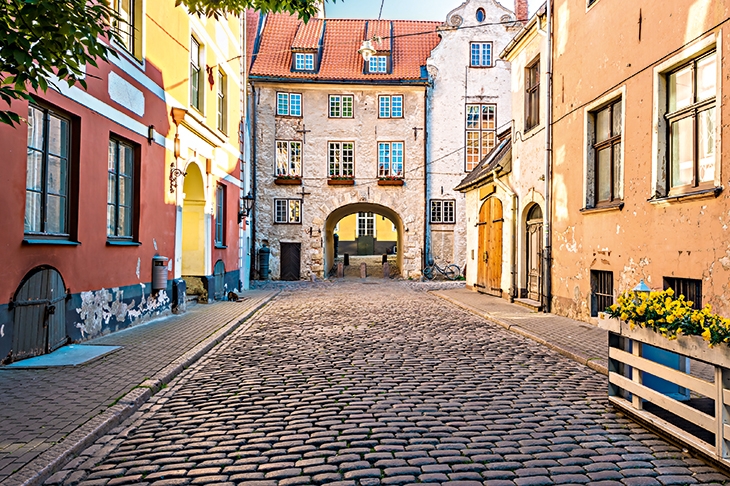In the historic heart of Riga, Latvia’s lively capital, stands a monument which sums up this country’s stormy past. The Freedom Monument was built in 1935 to commemorate the war of independence in which patriotic Latvians fought off the Germans and the Russians to finally establish Latvia as a sovereign state. That first bout of independence lasted barely 20 years. In 1940 the Soviets marched in, then in 1941 the Nazis marched in and kicked them out, and in 1944 the Soviets marched back in again and stayed until 1991.
Yet despite being earmarked for demolition, the Freedom Monument survived. In the 1980s it became the focus for protests against Soviet persecution of Latvian dissidents. Today it’s the centre point of Eastern Europe’s most dynamic metropolis: a bustling business hub, and a cultural mecca too.
During the 1990s and the 2000s, Riga had another invasion to contend with: British stag parties lured here by cheap beer and budget flights. Thankfully, most of those boozy Brits have been repelled by Latvia’s entry into the eurozone, and the city centre is more sedate. Riga is still an affordable weekend destination, but there are cheaper places to go if you just want to get drunk. Instead, this ancient port is rediscovering its Hanseatic heritage. Founded by the Teutonic knights and colonised by Russians, Swedes and Poles, Riga is a city built on trade. Even half a century of Communism couldn’t eradicate its mercantile, creative nous.
Riga’s medieval Old Town reveals its Germanic roots. Among its gingerbread houses and robust brick churches, you could be in Bremen or Lübeck. Yet beyond the Teutonic Altstadt, the Russian influence is more overt: the weathered wooden villas of the Tsarist era; the gleaming onion domes of the Orthodox churches. Between the wars, the Latvians established their own architectural style — an ebullient kind of Art Nouveau.
The Red Army and the Wehrmacht both knocked this place about a bit, but in spite of these travails a remarkable amount of old Riga has survived. Even the brutalist Soviet tower blocks have a certain curiosity value — more benign somehow, almost quaint, now the tyranny that built them has retreated. Bizarrely, Riga’s covered market is housed in several huge Zeppelin hangars, left over from the Kaiser’s occupation during the first world war. Nothing in Riga is entirely as it seems: the flamboyant Splendid Palace isn’t a palace but a cinema; the Grand Palace Hotel used to be Latvia’s Central Bank.
And if city life becomes too hectic, the seaside is only half-an-hour away. A short ride on a local train brings you to the broad sandy beach of Jurmala: hidden behind thick dark forest, washed clean by the Baltic. During the hot summer months this resort is swarming with day-trippers, but out of season it’s supremely peaceful. Strolling along this tideless shore, staring out to sea, Latvia’s past vicissitudes seem a long way away, but this tranquility is illusory.
After a short fitful slumber, the Russian Bear is stirring. As Latvians toast the centenary of their fragile independence, Riga’s Freedom Monument is a sombre reminder that sovereignty is never guaranteed.






Comments